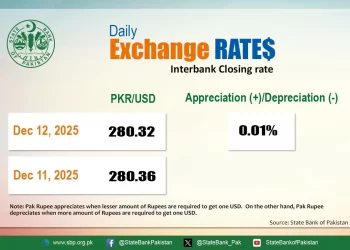WASHINGTON (news agencies) — As president, Donald Trump imposed a 25% tariff on foreign steel, which hurt Clips & Clamps Industries, a Michigan auto supplier — raising its materials prices, making it harder to compete with overseas rivals and costing it several contracts.
Jeff Aznavorian, the company president, thought he might enjoy some relief once Joe Biden entered the White House. Instead, Biden largely preserved Trump’s tariffs — on steel, aluminum and a mass of goods from China.
“It was a little surprising that an ideologically different administration would keep the policies so intact,’’ Aznavorian said, recalling how a previous Democratic president, Bill Clinton, had fought for freer trade. “That’s just so different from a 2024 Biden administration.’’
Trump and Biden agree on essentially nothing, from taxes and climate change to immigration and regulation. Yet on trade policy, the two presumptive presidential nominees have embraced surprisingly similar approaches. Which means that whether Biden or Trump wins the presidency, the United States seems poised to maintain a protectionist trade policy — a policy that experts say could feed inflation pressures.
Last week, in fact, Biden announced some new tariffs, on Chinese electric vehicles, advanced batteries, solar cells and other products, that he said would keep Beijing from flooding the United States with cheap imports.
The protectionist tilt of the two presidential contenders reflects the widespread view that opening the nation to more imports — especially from China — wiped out American manufacturing jobs and shuttered factories. It’s an especially potent political topic in the Midwestern industrial states that will likely decide who wins the White House.
“If you look at the election, it’s obvious,’’ said William Reinsch, a former trade official now at the Center for Strategic and International Studies. “Where are the deciding states? Pennsylvania, Michigan, Wisconsin — right there, you can see that trade is going to have an outsize role.’’
In their own ways, the two candidates have ditched a U.S. commitment to relatively frictionless trade — low barriers and scant government interference — that were a bedrock of American policy for decades after World War II. The idea was that free trade would hold down costs and aid consumers and businesses across the world.
In recent years, though, the perception grew that while free trade benefited households and companies, it hurt workers, with American jobs falling victim to cheaper foreign labor.
“The once nearly unanimous Washington consensus on free trade is dead,” Robert Lighthizer, who was Trump’s lead trade negotiator, crowed in his 2023 book, “No Trade Is Free.’’
Yet like free trade, trade protectionism carries its own economic price. It can raise costs for households and businesses just as the nation is struggling to fully tame inflation. It tends to prop up inefficient companies. It spurs retaliation from other nations against American exporters. And it typically sours relations with allies and adversaries alike.
Trump, who brazenly labeled himself “Tariff Man,’’ tried to pummel America’s trading partners with import taxes, vowing to shrink America’s trade deficits, especially with China.
He did pressure Mexico and Canada into rewriting a North American trade deal that Trump insisted had destroyed U.S. manufacturing jobs. He also persuaded China to agree to buy more American farm goods. But his efforts didn’t revive the manufacturing base — factory jobs make up a smaller share of U.S. employment than they did before his presidency — or shrink America’s trade deficits.
Trump has vowed more of the same in a second term. He’s threatening to impose a 10% tariff on all imports — and a 60% tax on Chinese goods.
“I call it a ring around the country,’’ Trump said in an interview with Time magazine.
Mark Zandi, chief economist at Moody’s Analytics, warns that the consequences would be damaging. Trump’s tariff plans, Zandi said, “would spark higher inflation, reduce GDP and jobs and increase unemployment, all else equal.”
A year after the import taxes were imposed, Zandi estimates, average consumer prices would be 0.7 percentage points higher than they would otherwise be. A report out Monday, from Kimberly Clausing and Mary Lovely of the Peterson Institute for International Economics, estimates that for families in the middle of the U.S. income distribution, Trump’s tariff proposals would amount to a tax of at least $1,700 a year.
For his part, Biden favors subsidizing such key industries as chipmaking and EV manufacturing to give them a competitive edge. It’s a stance that reflects worry that China’s rising military and technological might imperils America’s national security. As last week’s announcement showed, Biden isn’t averse to new tariffs, either. His top trade negotiator, Katherine Tai, has opened an investigation into Chinese trade practices in the shipbuilding industry, likely a prelude to imposing further sanctions on Beijing.
“The laissez-faire economic model of trade wasn’t working for the United States,’’ said Elizabeth Baltzan, a senior adviser to Tai. “We want to correct for that. The measures you take in order to get a fairer (economy) may involve measures that could be labeled protectionist. But I think you have to ask what you’re protecting” — notably working-class communities.
Dani Rodrik, a Harvard economist who was an early critic of the globalization of the 1990s and 2000s, views Biden trade policies more favorably than he does Trump’s approach.









